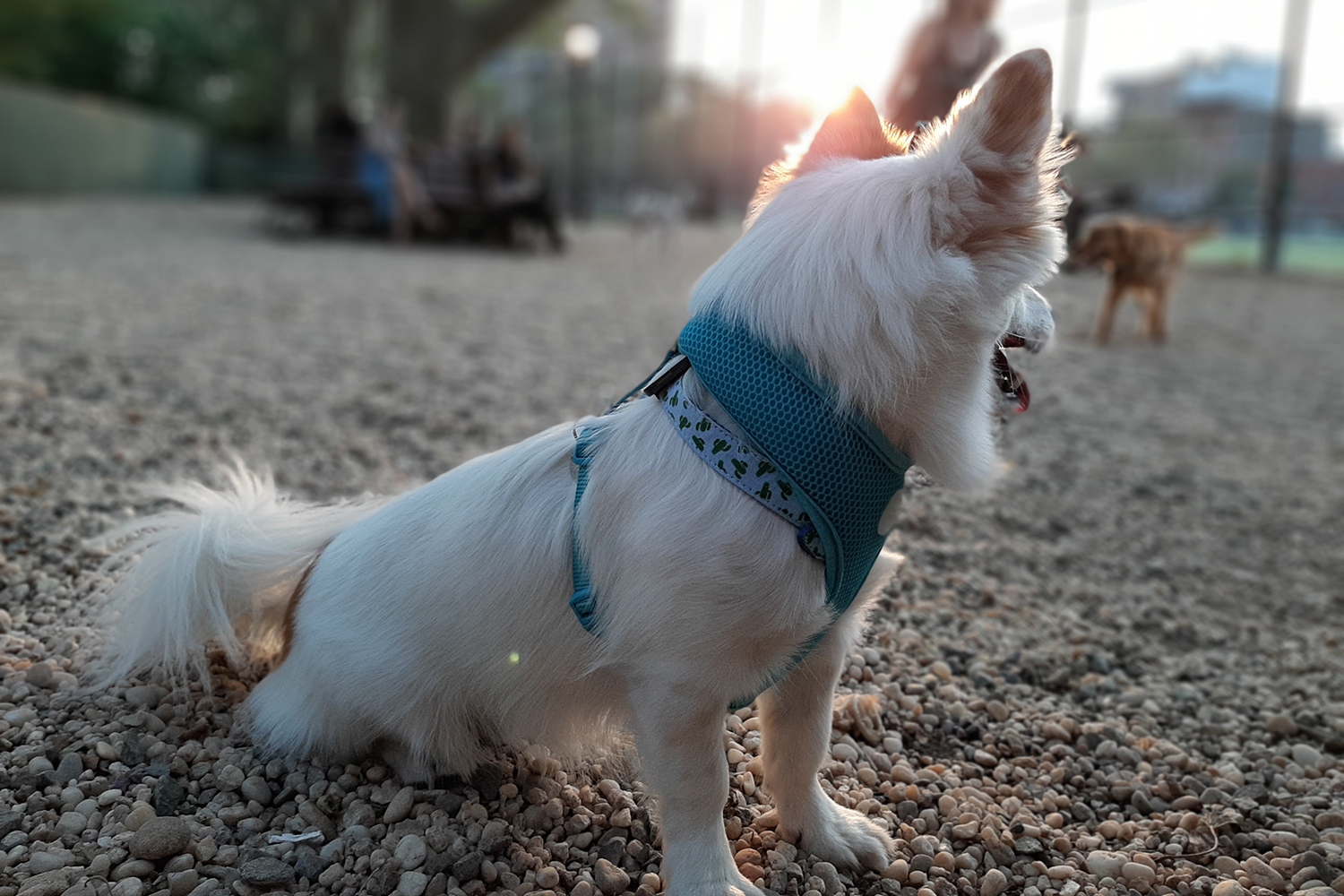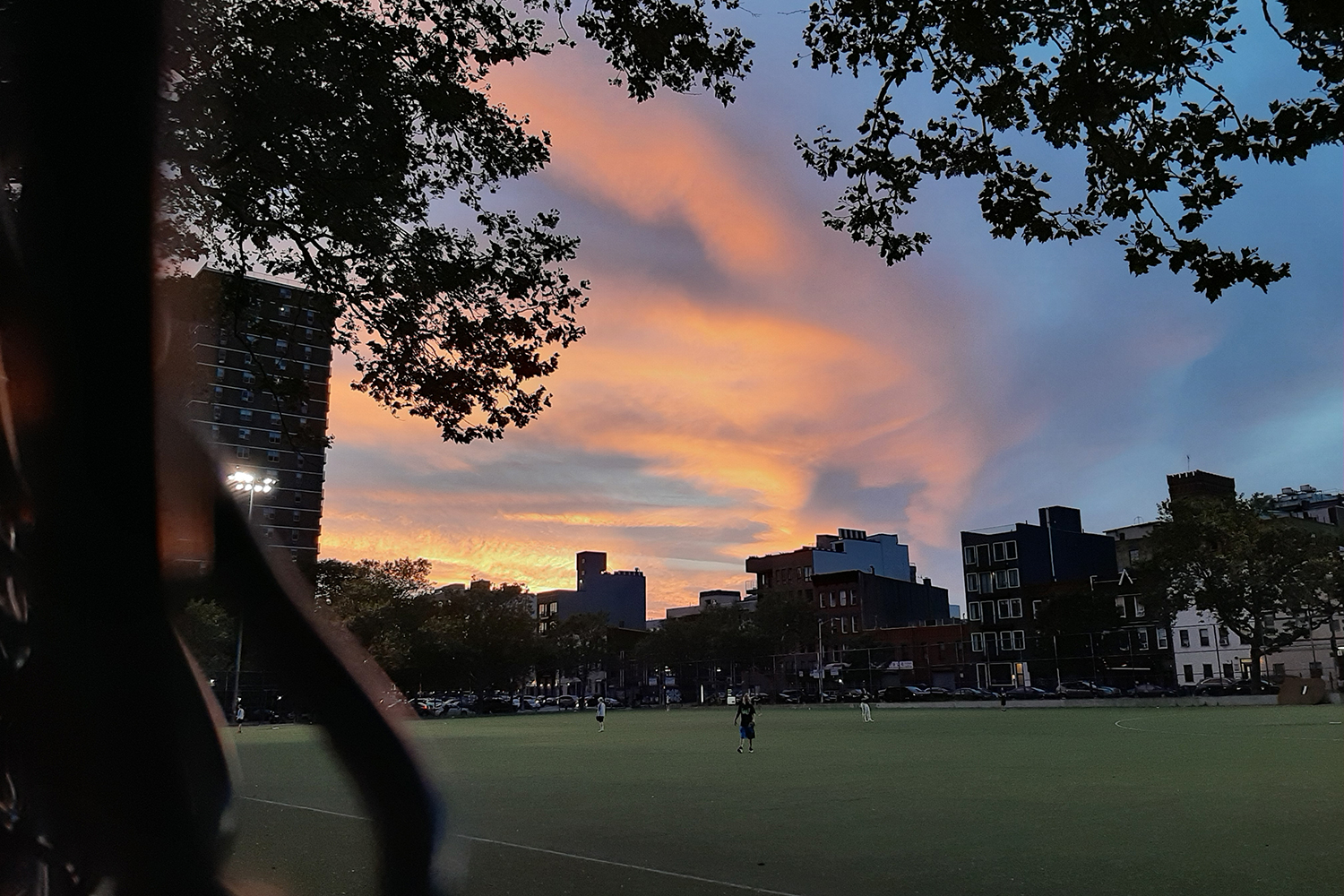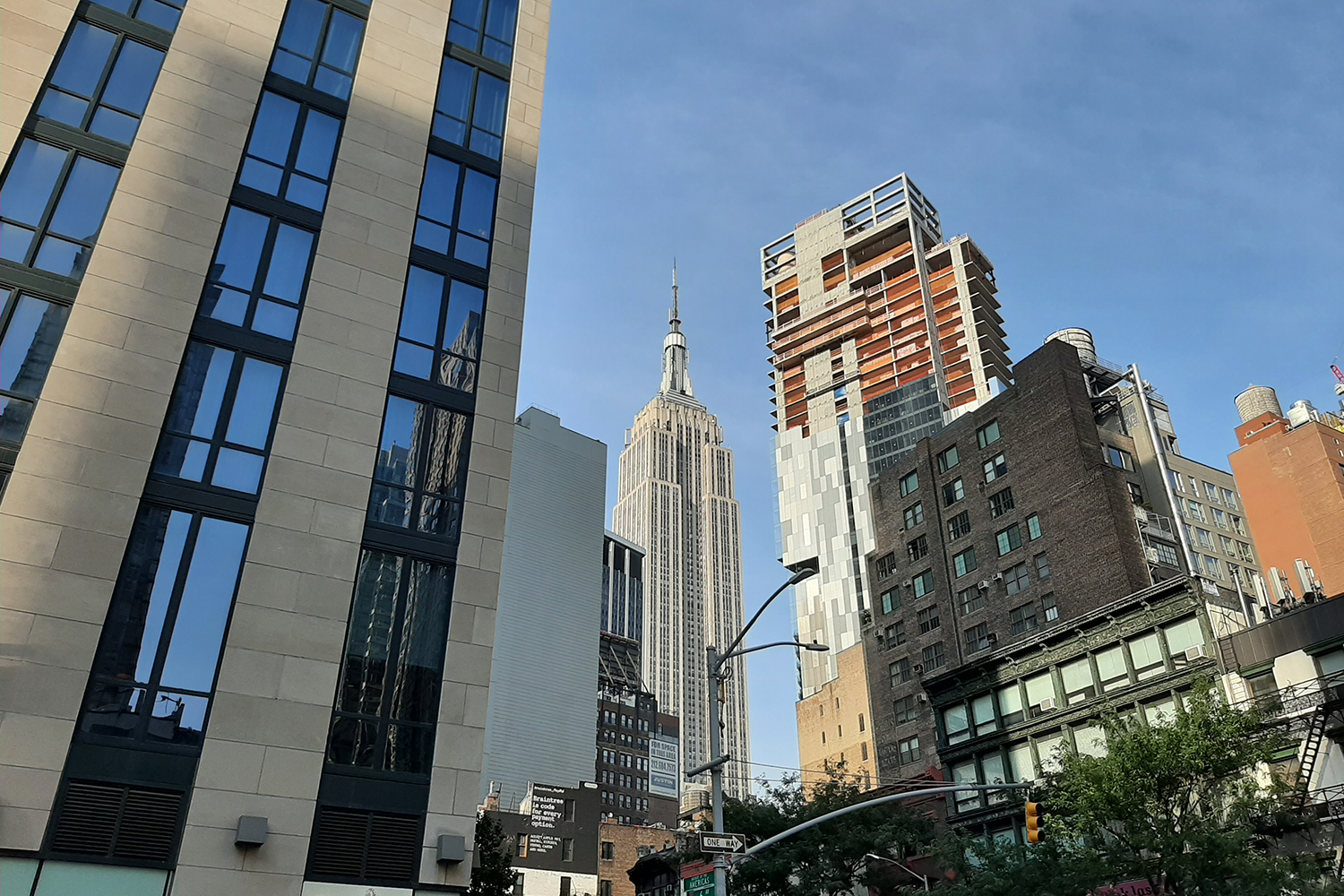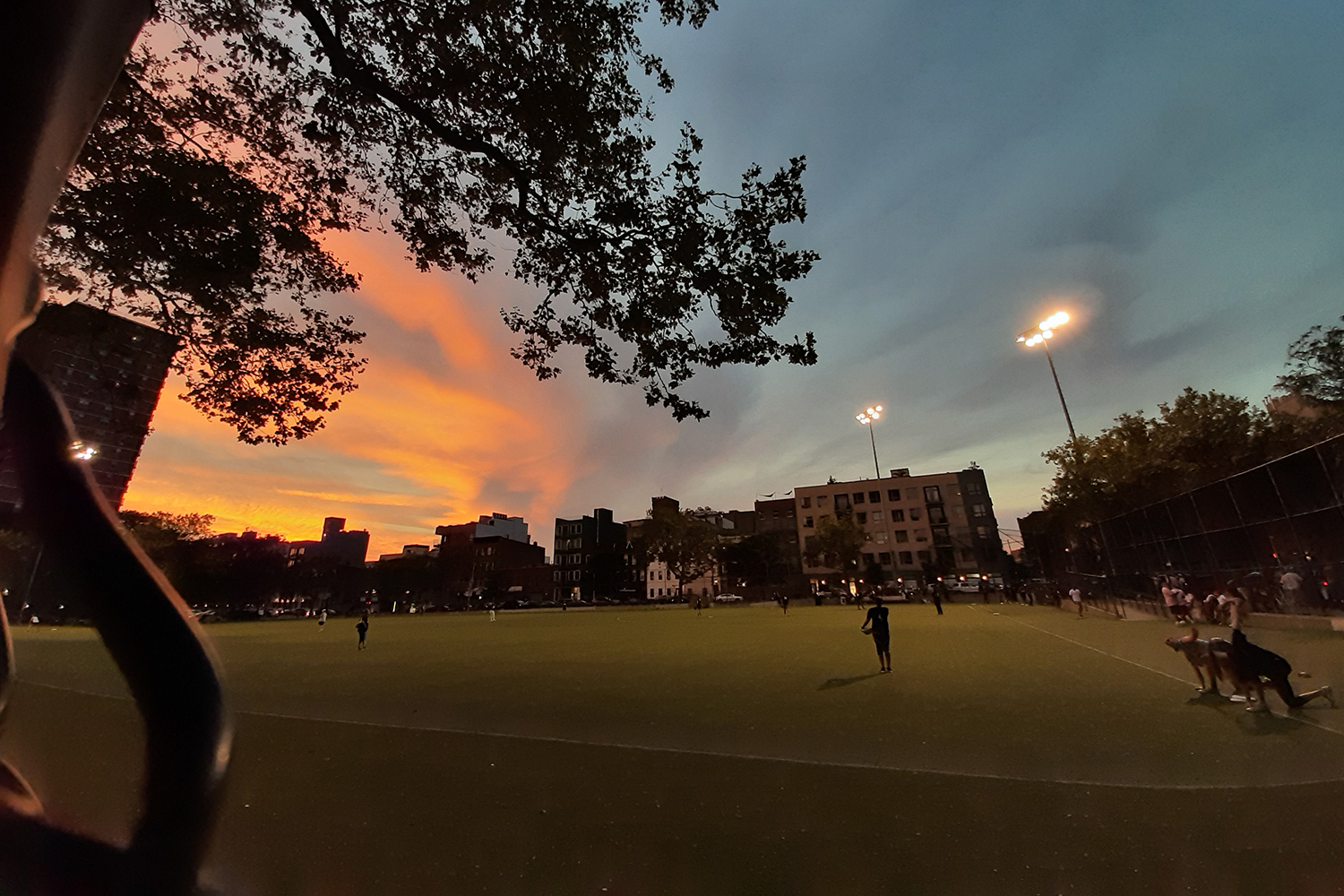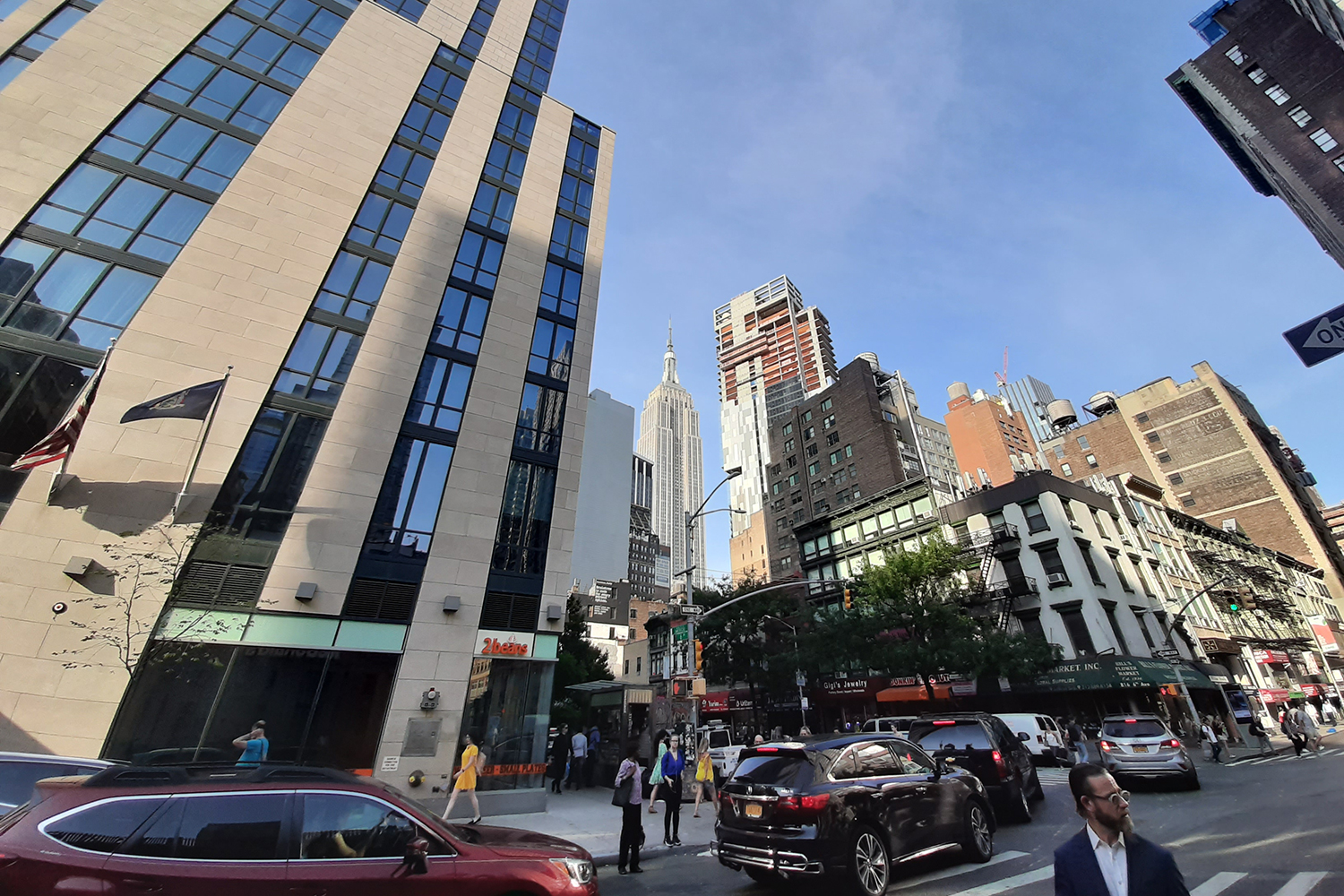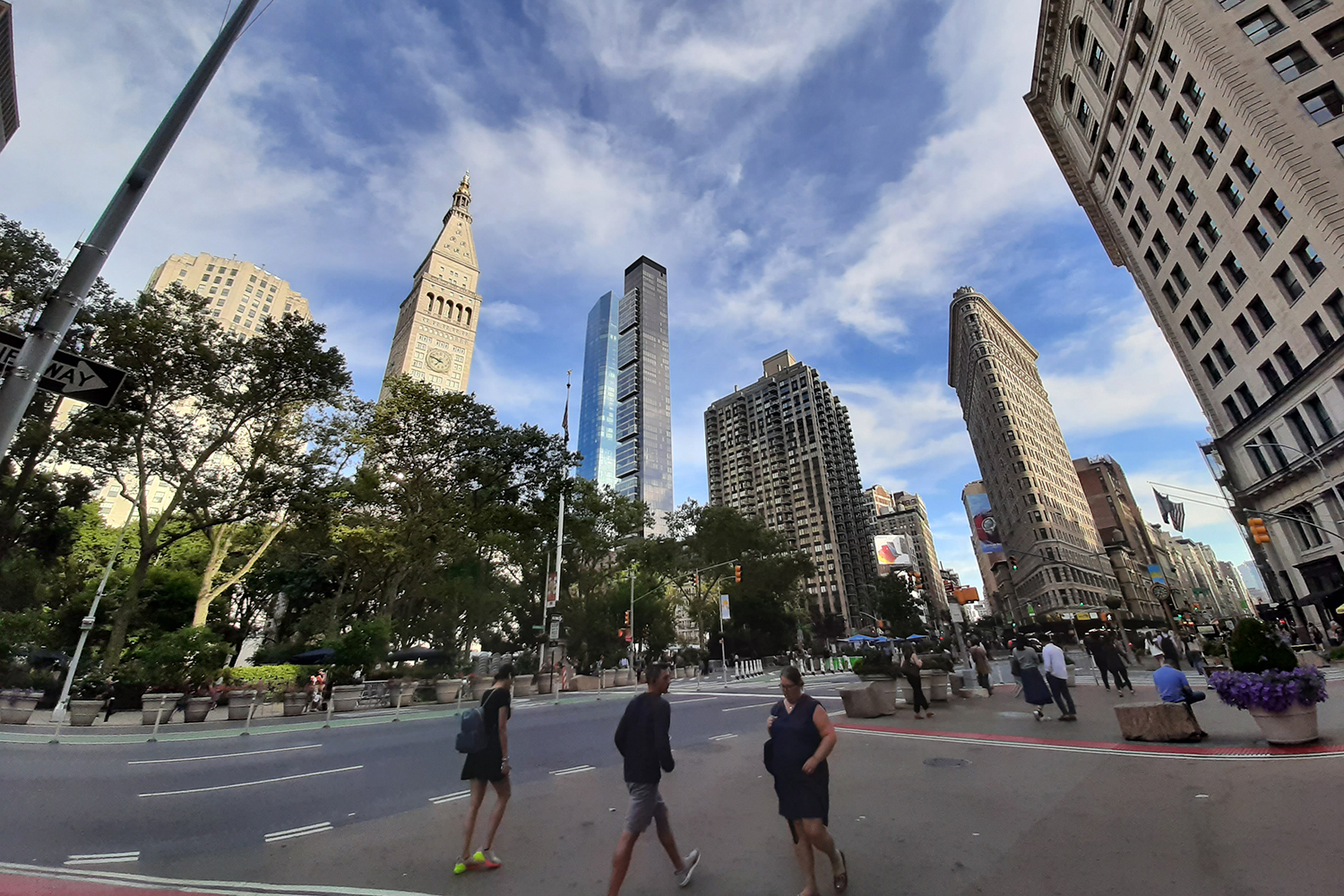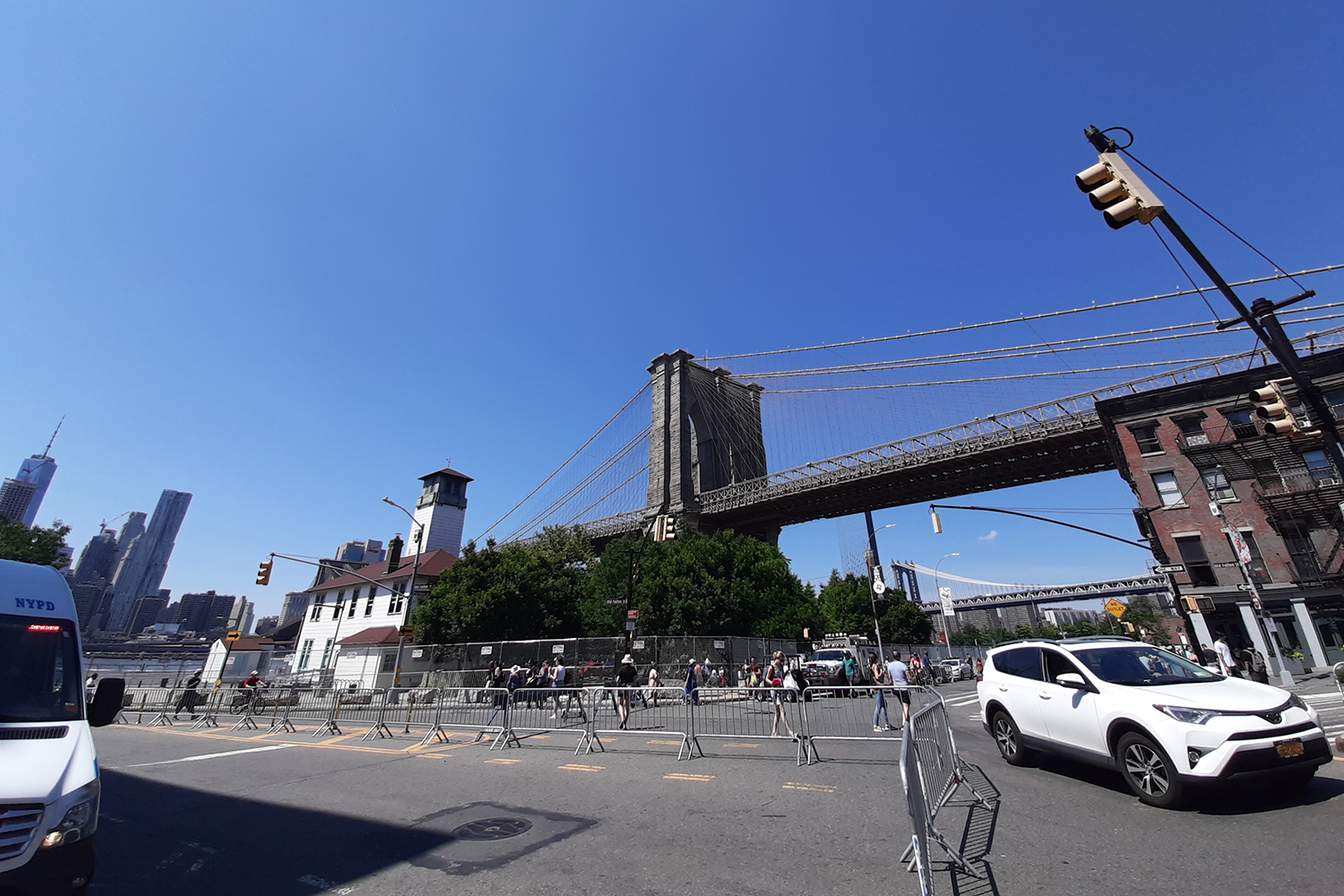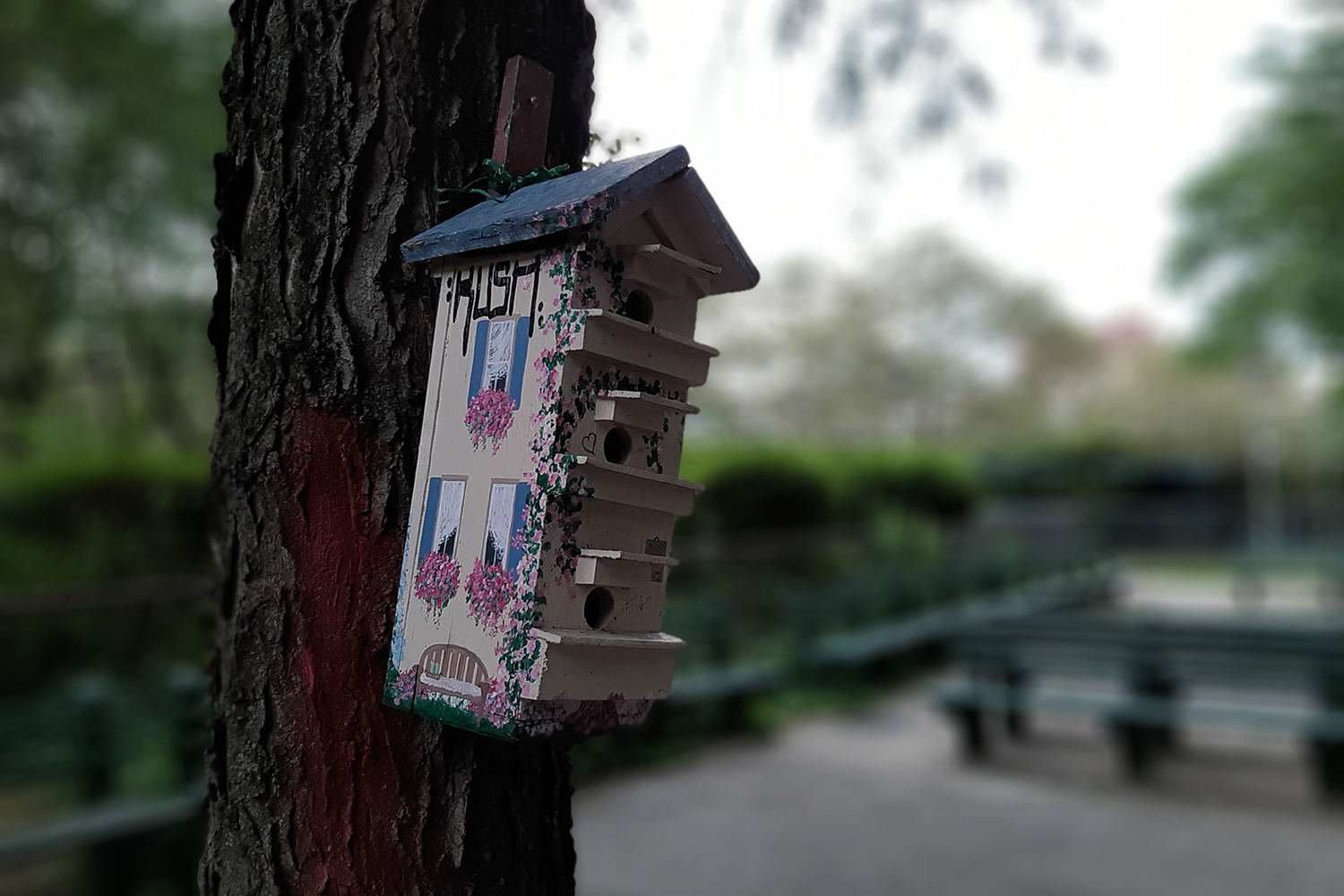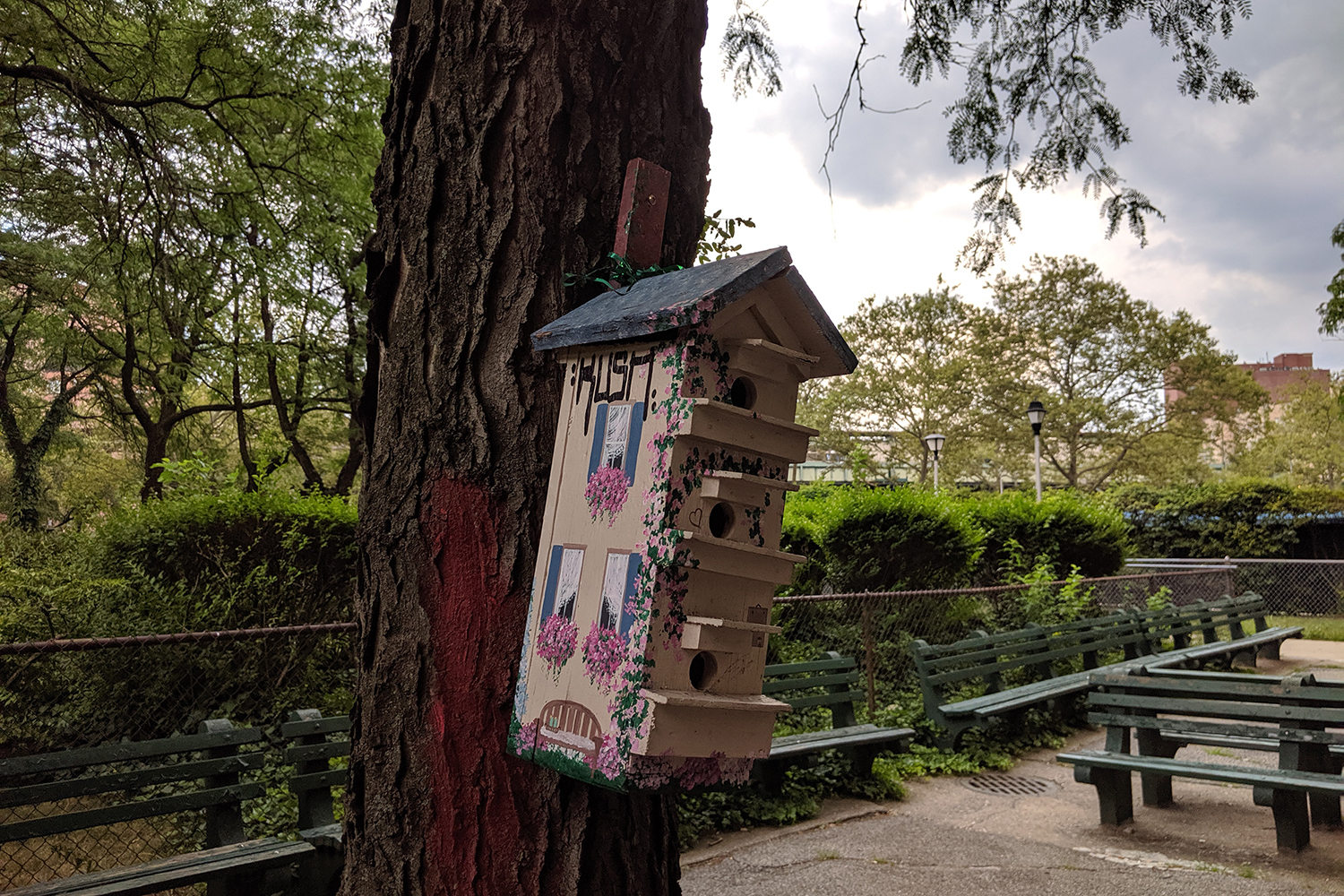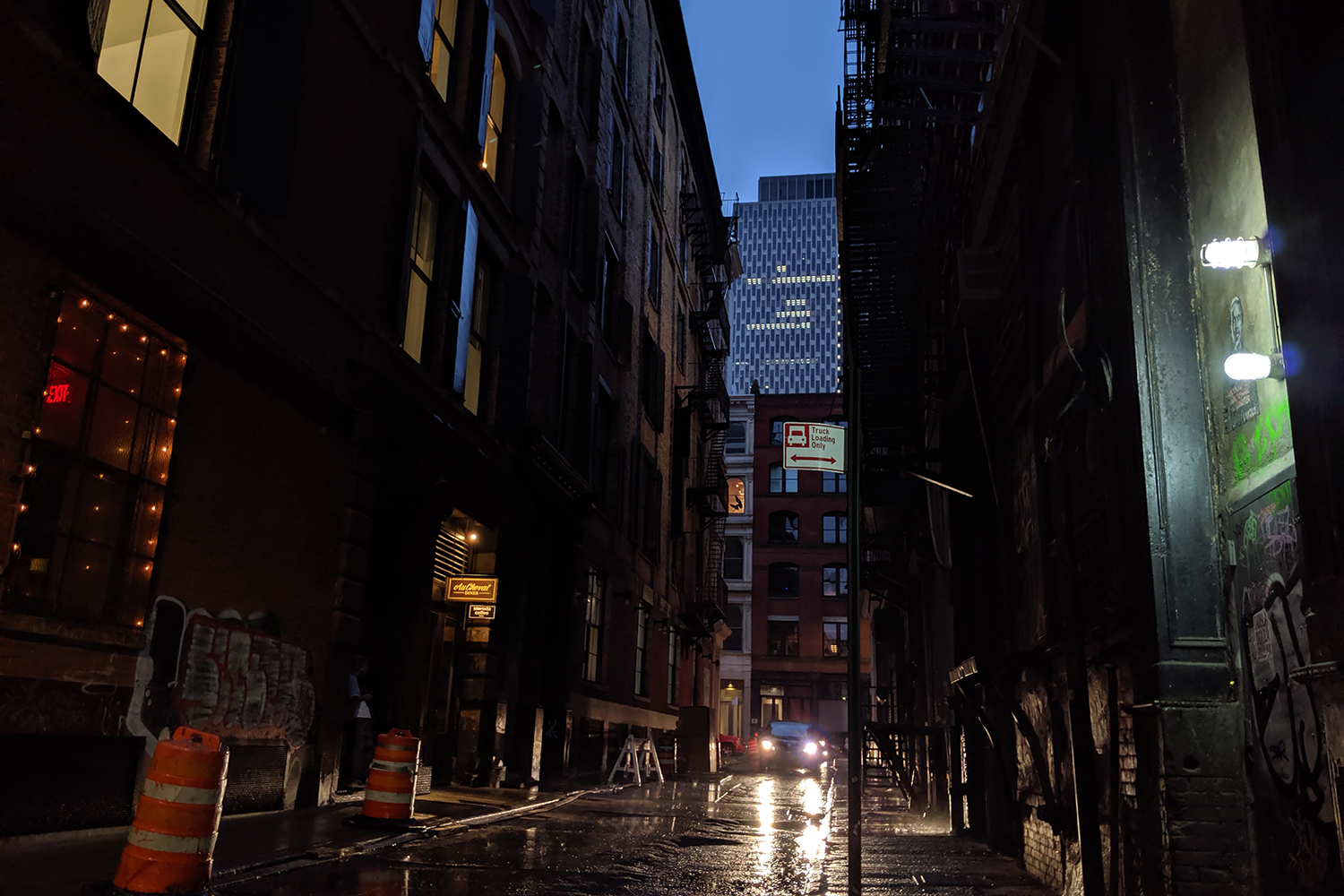- Excellent, modern-looking AMOLED screen
- Decent performance
- Capable, versatile camera
- Day-long battery life
- Affordable
- Won’t get Android updates quickly
- In-display fingerprint sensor is slow, fails often
- Feels cheap
Want the best price on a smartphone like the Samsung Galaxy A50? Check out our favorite Black Friday smartphone deals.
Samsung is best known for its Galaxy S and Note phones, but the company has a long history of selling budget phones under the Galaxy J and A brand. Sold with forgettable names like Galaxy J7 Prime and J7 Core, the internal specs often changed depending on where you bought them.
The latest Galaxy A-range is Samsung’s effort to streamline its budget and mid-tier lineup, and the face of the series is the Galaxy A50. Buy the Galaxy A50 from Sprint? It’s the same exact phone as the Galaxy A50 on Verizon.
At $350, it’s a great phone that delivers all-day battery life, a modern screen, solid performance, and a good camera. But its price puts it right next to our current budget champion, the $400 Pixel 3a. Can the Samsung phone pose a challenge to Google’s budget masterpiece?
Looking for a great phone this Black Friday? Check out our favorite Black Friday smartphone deals.
Modern looks
Expensive phones have large screens, slim bezels, and clever ways to place the selfie camera on the front — like the hole-punch camera on Samsung’s Galaxy S10 range, or the pop-up camera on the OnePlus 7 Pro. Budget phones have quickly mimicked this design, and the Galaxy A50 is no different. On the front, you get a slim bezel around the screen. The bezel is most noticeable at the bottom, also known as “a chin,” and there’s a teardrop notch at the top housing the selfie camera.
The A50 looks contemporary. The same can’t be said for the Pixel 3a, which suffers the plague of thick bezels. Around back, the A50 looks much like the iPhone XS, with a vertical camera setup in the top left corner. Ours came in glossy black, which showed rainbow-like effects when light caught the back. It’s nice, but we’d like to see brighter color options, as well.

The rear is made of plastic that looks like glass but feels cheap to the touch. The A50 is slippery, too. It’s not going to slide off a table, but it can feel hard to grip. It’s a large phone, with a 6.4-inch screen, so users with small hands may find it difficult to use comfortably.
I’m happy with the button placement — the power and volume rocker are on the right edge and are easily accessible. There’s a USB Type-C charging port at the bottom edge, next to a headphone jack, and a bottom-firing speaker.
The rear of the A50 is a bit dull. I think the Pixel 3a is more attractive. The A50 also doesn’t feel substantial in-hand like the similarly-priced Nokia 7.1, which uses a mixture of aluminum and glass. Still, it gets the job done, and the bezel-less screen is the real treat.
A bright display, but an annoying fingerprint sensor
The 6.4-inch Super AMOLED screen on the Galaxy A50 serves up 2,340 x 1,080 resolution, which is similar to the Pixel 3a’s 2,280 x 1,080 resolution. It doesn’t beat the contrast ratio of the Pixel 3a’s screen, which offers slightly darker colors, but the A50’s screen looks sharp and it’s plenty bright.
You’ll be more than satisfied with the viewing experience on either phone. The Pixel 3a has a Samsung-made screen, after all. However, the A50 earns a bonus point because videos, movies, and games look more immersive thanks to its bezel-less design.

Does audio quality help immersion? Not exactly. There’s a single bottom-firing speaker, and while it can get loud, it sounds muffled. It can be difficult to hear audio when outdoors in noisy environments, even with the volume cranked to the max. The Pixel 3a’s stereo speakers are better, delivering richer quality, though volume is comparable.
The A50 has a headphone jack (as does the Pixel 3a), so you can plug in if you don’t have wireless earbuds. The phone also supports Dolby Atmos, and music sounds better listening in with Samsung’s own Galaxy Buds.
Samsung’s in-display fingerprint sensor is a pain point. The A50 places it under the front screen glass, and like most under-glass sensors, it’s unreliable. You can use a face unlock option, but it’s not quick, and its implementation here isn’t secure.
Solid performance
Unlike most Android phones in the U.S., Samsung’s Galaxy A50 isn’t powered by a Qualcomm processor. Instead, Samsung uses its own Exynos 9610 with 4GB of RAM. There’s 64GB of internal storage, and a MicroSD card slot in case you need more space.
The A50’s performance is acceptable, but Google’s Pixel 3a is quicker overall. Google’s phone is faster when opening apps and didn’t show many struggles when switching between them. The Pixel 3a also feels more fluid, while the A50 few stutters here and there. Take Google Maps, for example. Moving around the map is smooth on the Pixel phone, but you can see occasional lag on the A50.
Here are a few benchmark results:
- AnTuTu 3DBench: 140,900
- Geekbench 4 CPU: 1,683 single-core; 5,389 multi-core
- 3DMark Sling Shot Extreme: 1,368 (Vulkan)
The benchmark back this up. The Pixel 3a beat out the A50 in AnTuTu and 3DMark tests, though the A50 pulled ahead in Geekbench results.
Still, the Galaxy A50 is a perfectly capable phone. It didn’t have any trouble with apps, and while performance isn’t the smoothest, it never failed me. Even gaming is possible. In PUBG: Mobile, the game automatically opted for the highest graphical settings possible, and I didn’t run into any hitches while playing (though the phone felt warm to the touch). I also saw solid performance in Alto’s Odyssey and Pako: Forever.
Overall, the A50 is easily better than the Nokia 7.1, but a hair behind the Pixel 3a.
One UI software
I reviewed the Verizon Galaxy A50, which is pre-installed with many apps and games. Thankfully, I was able to uninstall most of the bloatware.
The phone runs Samsung’s One UI interface, which is laid over Android 9 Pie. It looks slick, though I wish the icons weren’t so large. It’s among the better manufacturer skins on a phone.
However, software Google’s Pixel 3a has the edge. The Pixel has smarter features in software, like Call Screen, which protects you from robocalls, and Now Playing, which detects and displays music playing in your surroundings.
Software updates are a concern, too. Samsung is notoriously slow to deliver Android version. It took the Galaxy S9 series close to six months to get Android 9 Pie on all devices in the U.S. On a more positive note, Samsung is following through with monthly security updates for several devices.
Google’s phones promise three years of security and version updates. That means you can expect the Pixel 3a to run Android S in 2021. Updates are important. They don’t just bring new features, though they are very much appreciated; security updates can keep your device protected and secure.
Samsung confirmed to Digital Trends that the Galaxy A50 will receive quarterly security updates, with unspecified “plans for an OS update.” Expect to receive Android Q, and not much else. That’s disappointing, though much better than what budget phones received a few years ago.
Surprisingly strong camera
The Samsung Galaxy A50 has a triple-camera system on the rear. That includes a 25-megapixel main lens (f/1.7 aperture), a 5-megapixel depth camera (f/2.2), and an 8-megapixel wide-angle lens (f/2.2).
The camera app can be slow to launch, and the shutter can lag at times, but photo quality is good. The HDR surprised me the most and makes the A50 adept at handling high-contrast scenarios. There’s a good amount of detail, colors look vibrant, and the wide-angle lens allows for creativity.
It’s not without flaws. The camera can struggle with fast-moving objects, and since there’s no optical image stabilization, you need to stay as still as possible when taking a photo. The A50 performs well in low-light situations, but can’t match the Pixel 3a and its A.I.-assisted Night Sight mode.
The wide-angle camera’s photos are extremely distorted, which is fine if that’s the look you’re going for. It does make the A50 more versatile than your typical budget phone. The wide-angle lens has trouble in dark situations, however.
You can’t use the third camera. It’s not a telephoto lens, but a depth camera, and it only works during portrait mode (Samsung calls it Live Focus). It adds bokeh around a subject, and the photos are strong when there’s good lighting.
I compared the Galaxy A50 to the Pixel 3a, as you can see in the photos above, and preferred the Pixel 3a. Samsung’s HDR can be too aggressive, which results in strangely morphed colors, like the image of the birdhouse. It doesn’t handle low light well, blowing out the image and compromising image quality. The Pixel 3a handles dark settings well even without the Night Sight feature turned on.
The A50’s Live Focus shot of my dog is great, but Google’s phone has better colors, is more detailed, and the bokeh effect isn’t as exaggerated. The Pixel 3a slightly stumbles on deciding where to apply bokeh, but it’s still the better photo.
There’s a 25-megapixel camera (f/2.0) on A50’s front, and it can take decent selfies, even with Live Focus mode. Don’t expect the same amount of detail you get in selfies from the Pixel 3a, though.
The A50 has a surprisingly strong camera system, especially for its $350 price tag. However, the Pixel 3a elevates the camera experience. If the camera is your favorite feature on a phone, you’ll want to opt for the Pixel 3a.
A big battery
There’s a massive 4,000mAh battery in the Galaxy A50. As expected, it lasts a full day of heavy use, and not a single minute more. After a day of messaging, music streaming, gaming, and capturing photos, the phone hit 15 percent close to midnight.
When I didn’t use the phone as heavily, I often arrived home at 6 p.m. with 40 percent charge remaining, if not a little more. With light usage, there’s a chance you can stretch battery life to a little under two days. Battery anxiety isn’t an issue here.
Our battery test proves that too. I played a 1080p YouTube video over Wi-Fi with the brightness cranked to the max, and the Galaxy A50 lasted 10 hours and 56 minutes. That’s almost two hours more than the Pixel 3a, minutes behind the Pixel 3a XL, and it just barely bested the $900 Samsung Galaxy S10. Impressive.
Charging it up is a quick endeavor thanks to the USB Type-C port. Sadly, there’s no wireless charging for added convenience, but most phones in this price range don’t have that feature.
Price, availability, and warranty information
The Samsung Galaxy A50 is $350 and available from Verizon, Sprint, and Xfinity Mobile. You can buy it unlocked starting September 20 from Best Buy, Amazon, and Samsung.com. Pre-ordering from Samsung can net you up to $300 off with a qualifying trade-in.
Samsung offers a standard limited warranty, which protects the phone from manufacturer defects for one year from the date of purchase.
Our Take
The Galaxy A50 shows Samsung can make excellent phones, no matter the cost. Competition in this price range is stiff, though, and there are a few areas where Google’s Pixel 3a still pulls ahead.
Is there a better alternative?
Yes. The Google Pixel 3a or 3a XL. Both are a little more expensive, but not by much. They match the A50 in several categories such as screen, battery life, and performance — pulling ahead in some — but they have better cameras, and significantly better software support.
Spend $150 more, and you can get the spectacular Asus ZenFone 6, which grants you the same high-end processor inside the Galaxy S10 — so you get superior performance — as well as a massive 5,000mAh battery. Or consider the ZTE Axon 10, another mid-range phone with even better hardware.
Want an iPhone? The least expensive new choice is Apple’s iPhone 8, which retails for $450. It’s still a solid phone, but the design is dated next to the Samsung Galaxy A50.
Check out our best cheap phones guide for more.
How long will it last?
The Galaxy A50 has no water resistance, so it won’t play well with water. Thankfully, it’s not made of glass, so you don’t need to worry about shattering both sides of the phone (just one).
This phone will likely last you two years, if not three, before the battery begins to deteriorate. You can only expect one year of version updates from Samsung, however, so the phone’s elder years will be spent running an outdated version of Android.
Should you buy it?
Yes. We particularly like the unlocked version available for under $300 on Amazon already. It’s a great value, and currently available for as little as $230 on sale. That’s tough to beat.




